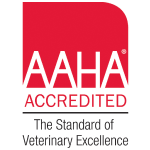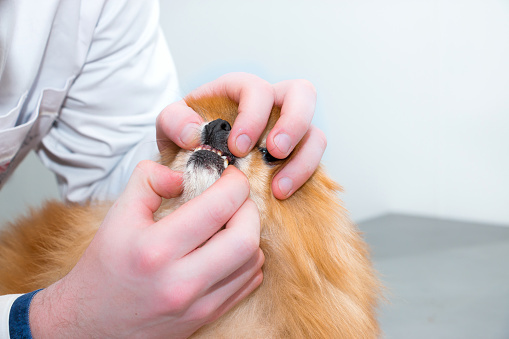Dentistry, Advanced Dentistry and Dental Referrals
South Hyland Pet Hospital has been providing advanced dental care for our own patients and those referred by local clinics since 1985. Dr. James Libby, one of the founders of veterinary dentistry in Minnesota, established a legacy that Dr. Burk and Dr. Lehnert continue today, seeing referral cases from other clinics for specialized dental services. We provide this advanced care in the comfort and personal attention of a locally owned, AAHA Accredited practice, with each patient receiving a comprehensive, individualized anesthesia and treatment plan. We understand that dental procedures can be stressful for pets and their owners, and our team is here to support you through every step. Referring clinics receive a detailed written summary promptly after each case.
Referrals: If your pet is being referred by another veterinarian, please have your clinic complete our Dental Referral Form to provide your pet’s medical history and relevant information. This ensures a seamless transition and allows us to provide the highest quality dental care.
Dental Services Available
- Advanced Dental Cleanings – Ultrasonic and hand scaling, polishing, antiseptic rinse, and full-mouth digital dental radiographs
- Dental Extractions – All types and levels of difficulty
- Endodontic Care – Root canal therapy and vital pulp therapy
- Composite Restorations – Sealing exposed dentin for uncomplicated crown fractures
- Oral Mass Removal – Rim excision and related procedures
- Bite Evaluations & Orthodontic Care – Correction of traumatic malocclusion via selective extraction or orthodontics
- Gingivectomy / Gingivoplasty – Surgical procedures to remove excess gum tissue (gingivectomy) and reshape the remaining gum tissue (gingivoplasty) to treat periodontal disease and gingival hyperplasia.
- Exotic Dental Care – Dental cleanings, molar leveling, incisor trimming, radiography, and extractions for rabbits, chinchillas, hedgehogs, small rodents, and guinea pigs
AAHA Dental Care Guidelines
South Hyland is committed to providing the highest standard of dental care, following the AAHA Dental Care Guidelines. These guidelines provide a framework for thorough dental examinations, professional cleanings, radiographs, and surgical procedures. Dental disease affects more than just the mouth—it can impact the heart, liver, and kidneys. Studies show that nearly two-thirds of pet owners do not provide the dental care recommended by veterinarians. Consistent preventive care and professional oversight are essential to protecting your pet’s overall health.
Oral Examinations: Evaluating puppies and kittens for problems related to baby teeth, missing or extra teeth, swelling, and oral development. As pets age, examinations focus on developmental anomalies, plaque and tartar buildup, periodontal disease, and oral tumors. Basic exams can be performed while pets are awake, but short-acting anesthesia is needed for a thorough evaluation.
Dental Cleanings: Regular dental cleanings under general anesthesia are recommended for all adult dogs and cats. Cleanings should occur annually, starting at one year for cats and small-breed dogs, and at two years for larger-breed dogs.
Understanding Periodontal Disease
Periodontal disease is an infection of the tissues surrounding the teeth that progresses in stages. It begins as plaque, which can harden into tartar. If untreated, it causes gum inflammation (gingivitis), infection below the gumline, bone loss, and loose teeth. This is painful for pets but preventable with proper dental care and regular professional cleanings.
Dentistry at South Hyland Pet Hospital
Physical Exam & Lab work: Every dental appointment begins with a full physical exam and pre-anesthetic lab work. Your pet’s teeth and gums are assessed to stage dental disease and identify fractured, worn, or loose teeth.
General Anesthesia: General anesthesia allows for safe, thorough dental care. Pain medication and local anesthetic nerve blocks are provided, and vital signs are monitored throughout the procedure (EKG, blood pressure, pulse oximetry, CO₂, and temperature). IV fluids and warming support are also used to ensure safety and comfort.
Dental Procedure: Procedures include a chlorhexidine rinse, ultrasonic and hand scaling (above and below the gumline), polishing, and a complete tooth-by-tooth examination with full-mouth radiographs. Treatments may include extractions, periodontal therapy, or oral surgery depending on findings.
Recovery & Follow-Up: Pets return home the same day. Written postoperative instructions are provided, and follow-up exams are scheduled based on the stage of dental disease to maintain optimal oral health.
Home Care & Prevention: Daily brushing is the best way to prevent plaque and tartar buildup. We can create a personalized home care plan for your pet, including brushing, dental diets, treats, chews, or water additives to support long-term oral health.
Frequently Asked Questions
How can I tell if my pet has dental problems?
Signs include bad breath, excessive drooling, loose teeth, gum swelling, or oral masses.
How do I brush my pet’s teeth?
Use a brush or gauze at a 45° angle, moving in small circular motions along the teeth surfaces. Focus on the cheek-facing sides and finish with downward strokes.
What else helps my pet’s oral health?
Safe chew toys can help reduce plaque, massage gums, and provide enrichment. Ask your veterinarian for recommendations or visit the Veterinary Oral Health Council (VOHC) website for approved products.
Ready to Schedule or Have Questions?
Call or text: (952) 884-1868
Request an Appointment: PetDesk App
Email: southhyland@southhyland.com
With comprehensive care, expert guidance, and a personalized approach, we help your pet maintain a healthy mouth and a happy, comfortable life.


